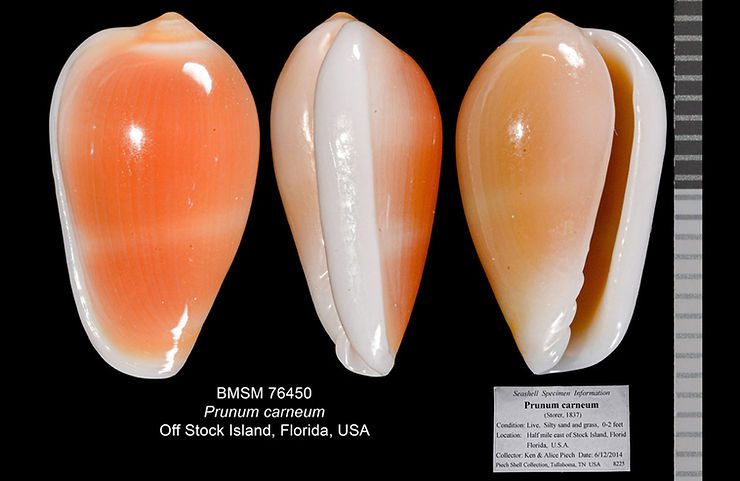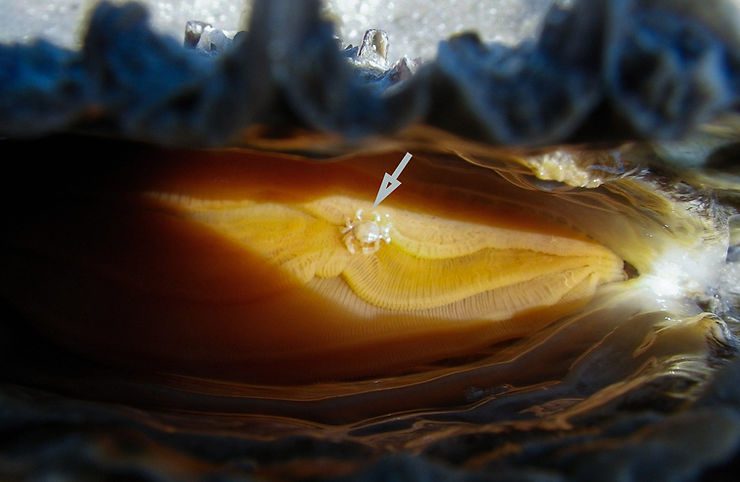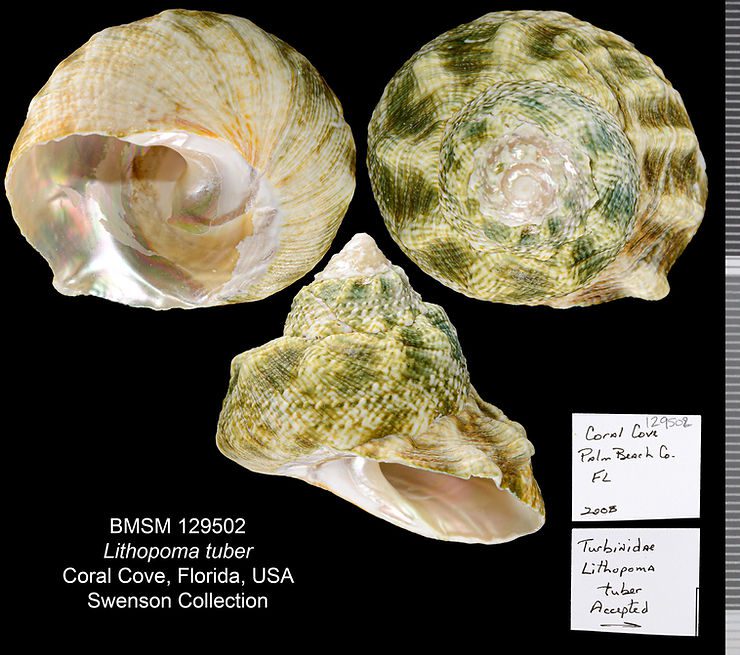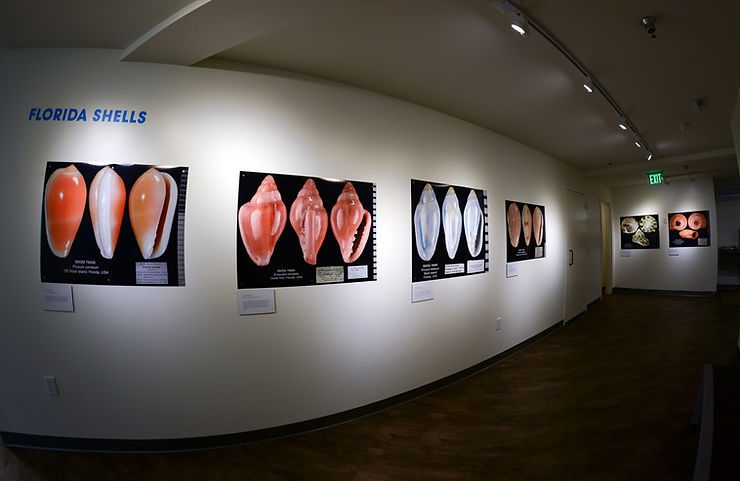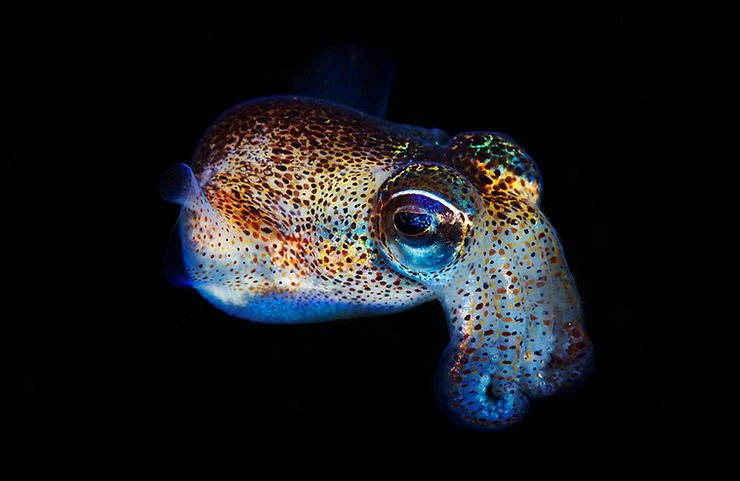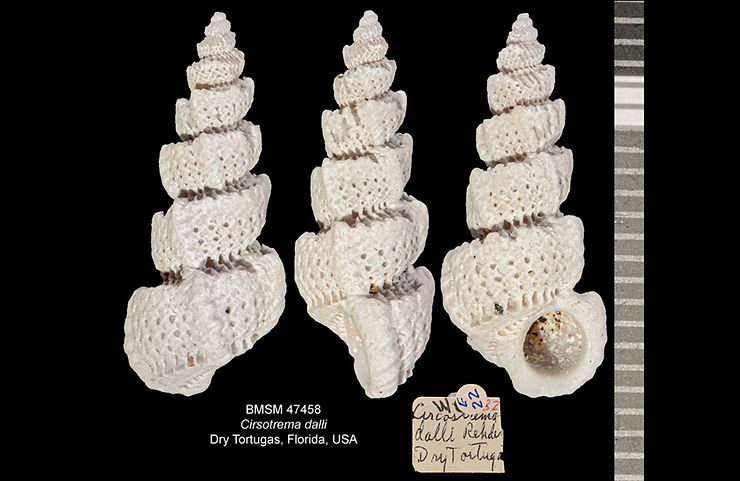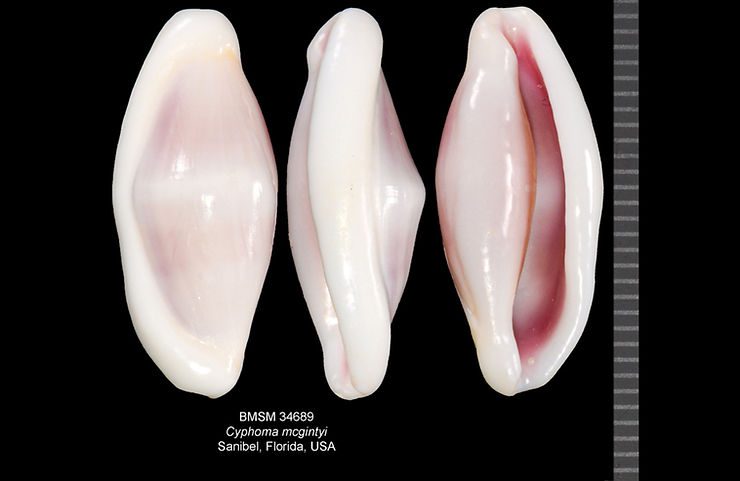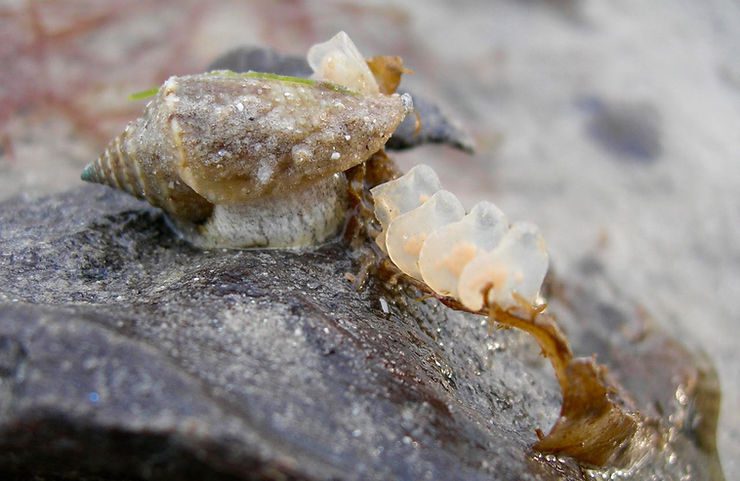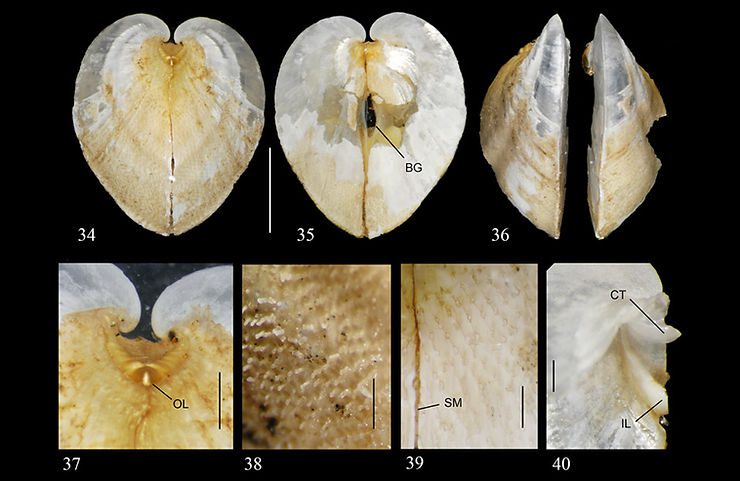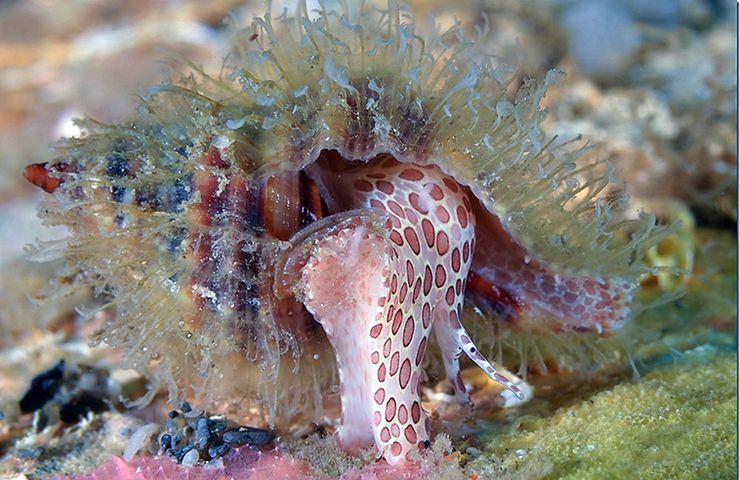
Meet the Giant Triton
The Giant Triton, Monoplex parthenopeus (Salis Marschlins, 1793), is a relatively common western Atlantic species that is present also in parts of the Indian and Pacific oceans. The long-lasting pelagic (open-water) larvae in this species allows for crossing of wide ocean expanses at the larval stage. This is one of the reasons for the broad geographical distribution of this species. National Shell Museum collaborator Anne DuPont photographed this Giant Triton off Pompano Beach, in Florida. Her
